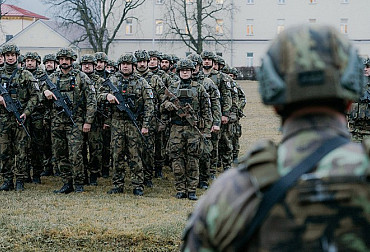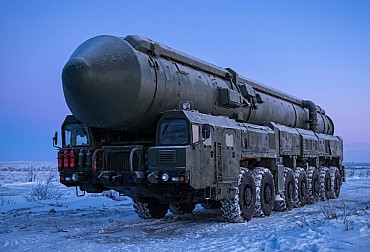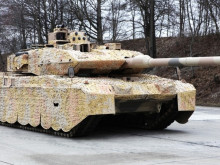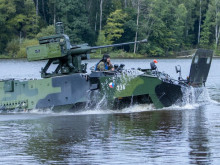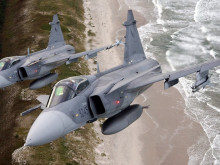Common V4 air defence
In the context of the war in Ukraine, implications for European defence are increasingly emerging. One of these is the need to modernise and strengthen Air Defence (AD) assets. In this context, let us recall that on 5 October 2021, the Ministry of Defence of the Czech Republic signed a contract for the delivery of the SPYDER short- and medium-range anti-aircraft missile complex to the Israeli company RAFAEL, and at the end of February this year, the first MADR (mobile 3D air defence radars ELM-2084 MMR) kit arrived under a contract from the end of 2019. From the perspective of European defence integration, it would then be appropriate to consider cooperation with neighbouring states, as discussed in the following article.
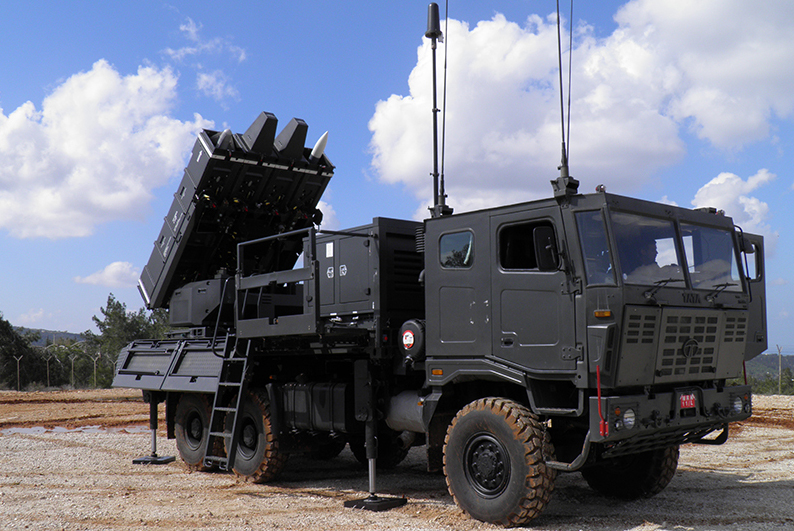 Picture: SPYDER-SR launcher | Rafael Advanced Defence Systems
Picture: SPYDER-SR launcher | Rafael Advanced Defence Systems
On page 18, the Concept of Build-up of the Czech Army 2030 states the following: "Ground-based Air Defence will consist of short-range anti-aircraft missile systems with the possibility of using extended-range and very short-range missiles, supplemented by systems to counter unmanned aerial vehicles, rocket, artillery and mortar fire. All systems will be capable of interfacing with other entities of national and alliance command and control systems and will have the capability to detect, track, identify and eliminate a wide range of airborne targets. Within the framework of the Czech Air Defence Forces NaPoSy, coverage of the designated part of the Czech airspace will be ensured around the clock and point protection of designated objects will be strengthened. The assets providing the Air Defence of the Land Forces will gain the ability to engage air attack assets on the move. The Land Forces units will be provided with VSHORAD (Very Short Range Air Defence) systems." Then, in connection with the construction of missile defence capabilities, the following is stated on the same page: "In cooperation with NATO, a decision will be taken on the need to build a missile defence capability."
On page 29, the Concept then states the following: "The capability to counter tactical and operational level unmanned aerial vehicles, missile, artillery and mortar fire will be achieved through the acquisition of C-UAS and C-RAM systems."
As already mentioned in the introduction, the Czech Army plans to modernise short-range air defence systems with the possibility of extending them by acquiring (for the time being) four batteries of the Israeli SPYDER system. In the future, it also plans to acquire C-RAM (Counter rocket, artillery, and mortar) close defence assets. Let us also mention that at the end of 2019, the Czech Republic decided to purchase 8 MADR (Mobile Air Defence Radar) kits, ELM-2084 MMR mobile 3D air defence radars, on the basis of a contract with Israel.
Slovakia has also decided to purchase Israeli ELM-2084 3D radars in the form of government-to-government (G2G) in early 2021. Given the fact that the Czech Army has also acquired the SPYDER system in addition to the above mentioned Israeli radars, it can be assumed that Slovakia will also opt for the same configuration. On the other hand, it should be mentioned that in connection with the war in Ukraine, the American Patriot system is being deployed on Slovak territory and although these systems will not be directly operated by Slovak soldiers, the Slovak government may eventually decide to purchase them based on its experience with these systems. Slovakia would thus follow Poland, which has already received the first components of the Patriot system from the US. In total, the Polish Air Defence Forces will receive 16 launchers, four AN/MPQ-65 radars, 208 PAC-3 MSE missiles and other components, including the IBCS command and control system, which will allow for future integration of, for example, F-35 aircraft with air defence assets.
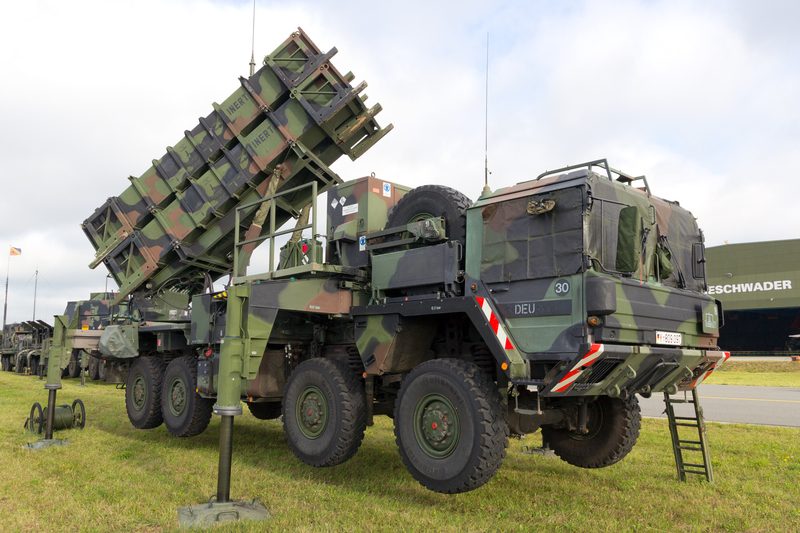 Picture: U.S. Patriot system deployed on Slovak territory in the context of the war in Ukraine (illustration photo) | Shutterstock
Picture: U.S. Patriot system deployed on Slovak territory in the context of the war in Ukraine (illustration photo) | Shutterstock
The last member of the V4, Hungary, is a bit of an outlier. Although it purchases the same Israeli radars as the Czech Republic and Slovakia in terms of launchers, Hungary opted for the US-Norwegian NASAMS system in the SHORAD category.

However, apart from the V4 countries, Germany is also interestingly entering the game, as it currently has the Patriot system and, according to recent information, is exploring the possibility of acquiring the Terminal High Altitude Air Defense (THAAD) missile defence system, which can be linked to the Patriot system by the IBCS system mentioned above.
Joint air defence options
The technical similarity of all these Air Defence and radar systems makes it possible to consider linking them into one regional air defence network that could protect Europe from the east. The common denominator of this Central European air defence system could be Israel.
In addition to SPYDER, it uses or has used Iron Dome, David's Sling, Patriot and THAAD. It follows logically that these assets must be linked within the Israeli air defence system. It is precisely the linking of existing and future systems into one integrated, multi-layered and international air defence system that is one of the ways to ensure effective protection of the airspace of European states, given the recent experience in Ukraine.
The situation is clear within the Czech Armed Forces. Israeli radars will be the basis of the newly built Air Defence system. Considering the experience from the deployment of the C-RAM Iron Dome system and its compatibility with the ELM-2084 radar, this system is a clear choice for the lowest layer of the Czech air defence system.
The next layer of short to medium range consists of the already mentioned SPYDER systems, which, given the possibility of their purchase by Slovakia, could be linked with Slovak air defence assets thanks to their identical radars. Interconnection of sensors will also be possible in the framework of cooperation with Hungary. The question remains how Poland will deal with this layer.
As far as the next layer for medium to long range is concerned, it can be based on the Polish (or German) Patriots. Their purchase by Slovakia cannot be ruled out either. The Israeli David's Sling also operates in this layer, using the aforementioned Israeli ELM-2084 MMR radars. The upcoming capability to launch SkyCeptor missiles, originally intended for the David's Sling, from the Patriot system is also a major advantage in conjunction with the Patriot system. The US military is also very interested in this capability.
The THAAD system could form the basis of the highest layer of long-range missile defence. In the Concept 2030, the Army does not exclude the possibility of building missile defence. Given the current threats related to the war in Ukraine, Polish efforts to contribute to missile defence cannot be ruled out. For now, however, the debate on a common layer of missile defence is at the very beginning.
The events in Ukraine have clearly demonstrated and continue to demonstrate the need to build a comprehensive Air Defence system capable of responding to virtually any threat. The technical similarity of the systems used in Central Europe can thus provide a good basis for a debate on building a unified air defence system and strengthening this area.
















